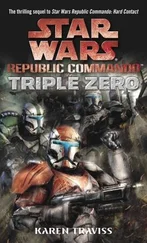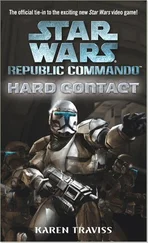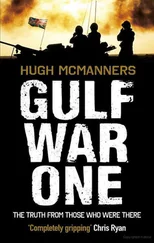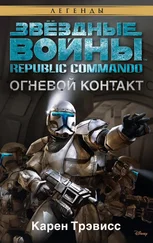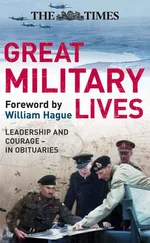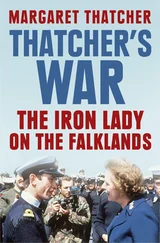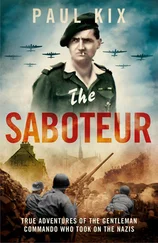Hugh McManners - Falklands Commando
Здесь есть возможность читать онлайн «Hugh McManners - Falklands Commando» весь текст электронной книги совершенно бесплатно (целиком полную версию без сокращений). В некоторых случаях можно слушать аудио, скачать через торрент в формате fb2 и присутствует краткое содержание. Город: London, Год выпуска: 2014, ISBN: 2014, Издательство: Nightstrike Publishing, Жанр: nonf_military, Биографии и Мемуары, на английском языке. Описание произведения, (предисловие) а так же отзывы посетителей доступны на портале библиотеки ЛибКат.
- Название:Falklands Commando
- Автор:
- Издательство:Nightstrike Publishing
- Жанр:
- Год:2014
- Город:London
- ISBN:978-0-992-81540-0
- Рейтинг книги:4 / 5. Голосов: 1
-
Избранное:Добавить в избранное
- Отзывы:
-
Ваша оценка:
- 80
- 1
- 2
- 3
- 4
- 5
Falklands Commando: краткое содержание, описание и аннотация
Предлагаем к чтению аннотацию, описание, краткое содержание или предисловие (зависит от того, что написал сам автор книги «Falklands Commando»). Если вы не нашли необходимую информацию о книге — напишите в комментариях, мы постараемся отыскать её.
Falklands Commando — читать онлайн бесплатно полную книгу (весь текст) целиком
Ниже представлен текст книги, разбитый по страницам. Система сохранения места последней прочитанной страницы, позволяет с удобством читать онлайн бесплатно книгу «Falklands Commando», без необходимости каждый раз заново искать на чём Вы остановились. Поставьте закладку, и сможете в любой момент перейти на страницу, на которой закончили чтение.
Интервал:
Закладка:
John came back very quickly and said that there was six rounds fire for effect (from 6 guns – totalling 36 shells) coming down any second now on the target, and that he was sorry he couldn’t do more for us. I was greatly heartened, keenly appreciating the problems of getting heavily committed gun batteries to fire an extra six rounds per gun onto a new target in the middle of a complicated fire plan.
The rounds came down beautifully, the grid reference was spot-on and they were bang on the data. There was no more firing from that enemy gun battery.
Cedric Delves told me later that the rounds had come crashing in at a most opportune moment as they were under effective fire in the Raiders, and suitably quelled the opposition. John Keeling came back up on the radio a little later on to check that all was well – another nice touch, as he was risking me him asking for yet more fire, further complicating his already grossly overloaded existence!
Things now became very confused whilst D Squadron were extricating themselves from this exposed situation, getting safely back onto the shore, and back up the hill to relative safety. They’d sustained a casualty and were arranging a casevac flight for him. However the injuries turned out not to be serious, but nevertheless, swathed in bandages, he was evacuated to the MDS (Main Dressing Station), and then on to Canberra at sea.
When the raiding party returned, we were able to piece together what had happened. My suspicions about the Argie hospital ship were well founded. It had indeed been scanning with its searchlight, and may have picked out our raiding party as they crossed the harbour.
As the Rigid Raiders approached the far shoreline they’d come under heavy fire from three 20-mm anti-aircraft guns, small arms, mortars and heavy .50-calibre Browning machine-guns. This fire was accurate, leaving splinters in the hulls with engines being hit. The Royal Marines coxswains behaved immaculately, swerving and dodging the red tracer that curved out through the darkness at them. They’d become adept at steering while crouched behind the steering-wheel console.
It became impossible to try and get all the raiding party ashore and carry on as planned, so the Rigid Raiders made their way back to the exposure of Blanco Bay, running the gauntlet of what was clearly a strong Argentine defence.
To everyone’s great relief only one man was hit, and although damaged, all the craft managed, one way or another to get back to safety. The 36 rounds that John Keeling had organised fell during the hazardous withdrawal of the squadron, distracting the Argies at a most opportune moment.
The weather was getting worse, well into the Falkland winter with dull cloudy skies. It was very cold, with bitter winds and sleet driving into our faces. The next day was a very tired anti-climax.
D Squadron made no pretence at camouflage, moving openly about the ridge, even in daylight. The ground was strewn with brown, ‘bivvie’ bags and recumbent figures covered in snow, bashas and even neat little camouflage-colour tents. Figures huddled in the rocks making brews, and people wandered over to see us and tell us more about the last night’s excitement, which everybody agreed had been a very frightening experience, particularly as sitting in the Rigid Raiders, they’d been unable to do anything except pray.
In the hills to the south of us, the commando and parachute units, joined by the Scots Guards, were once again going firm on their objectives (having been successful), digging in, collecting captured weapons, shepherding prisoners away, making brews, sitting in groups muttering to each other and doing ammunition resupply. We could hear the FOOs (artillery Forward Observation Officers) on their headsets, bringing down artillery fire onto the next layer of Argentine defensive positions. Sentries would be sitting beside GPMGs with yards of carefully folded, shining, brass-linked ammunition, whose cleanliness contrasted starkly with the accumulated dirt, damp and grime of everything else.
Nick and I cobbled all our resources together for a breakfast, our food running out yet again. We lined up the few bits and pieces that remained, sharing with the other three who were in the same state. The boys who were fresh from the ship gave us some tins, and we were also given the casualties’ food. (It’s customary when casualties are evacuated, for them to take only their weapon and some ammo – assuming they’re well enough to carry it, leaving behind the rest of their kit for everyone else to use.)
Below us in Port Stanley we could see a fairly normal amount of activity. Vehicles and men were moving about the town, and the overall scene was much the same as usual.
The first indication that the war was drawing to a close was the establishment of a ‘No-Fire’ line beyond which we could not engage the enemy. Then, a little later, we were given the order ‘Weapons Tight’, and finally ‘No firing unless in self-defence’.
We were now just sitting around rather aimlessly freezing, so our rear protection group came over to spend some time chatting with us. These chats were largely conjecture about exactly when it would all end, like the interminable sitting about that is usual towards the end of a big training exercise.
We could see groups of Argentine soldiers on the eastern slope of Sapper Hill beginning to wander aimlessly eastwards, and then the gradual development of a general movement toward the airfield. The soldiers from the various Argie gun positions were joining this exodus, which seemed to gather a strange, listless momentum as the day progressed. We presided over this scene, sending the odd report to the SACC to keep Julian Thompson and General Moore in the picture.
A Gazelle helicopter appeared, coming towards us from the north over Berkeley Sound. It landed to the rear of the ridge and Captain Rod Bell, the interpreter from the Fanning Head raid, and Lieutenant-Colonel Mike Rose, the CO of 22 SAS, clambered out. They explained that they were going to try and land on the Argie hospital ship and parley with Menendez. Rod had apparently been able to speak to them on the radio. Their aim was to try to bring forward the inevitable surrender. We briefed them on what we’d been able to see and offered advice about flying so as to avoid anti-aircraft positions. They clambered back in again.
The Gazelle pilot had in the meantime attached a wire cable to a large boulder, which he clipped into the lifting eye below his aircraft. From the cable he clipped a huge white flag. As they took off, the boulder kept the cable taut so the white flag flew underneath.
The Gazelle made its way slowly round Beagle Ridge to the east and towards the hospital ship. We heard no more until half an hour or so later when the Gazelle returned, landed, and Rod and Colonel Mike got out again. They’d had a favourable response to their suggestions, and were going to organise a meeting between Major-General Jeremy Moore and General Menendez in Port Stanley. They loaded their ball and chain back into the Gazelle and flew off.
The NGS control net started producing encouraging ‘End of Exercise’ type noises, with the exception of one message, which was that everyone else was likely to be stood down except FO1, who were to be prepared for ‘Operations in the West’.
There was the danger, as the Argentinians had threatened, of the war continuing in the west, that only the enemy in Port Stanley might ‘wrap’. There was no certainty that the large garrisons at Fox Bay and Port Howard were going to follow suit. Indeed, according to the rhetoric from Buenos Aires, these other outposts would be reinforced and continue to fight.
This filled our hearts with gloom, and I still wonder what the purpose of that message was. A deliberate security breach perhaps, to pressure the Argies who we knew listened very carefully to our NGS command net?
Читать дальшеИнтервал:
Закладка:
Похожие книги на «Falklands Commando»
Представляем Вашему вниманию похожие книги на «Falklands Commando» списком для выбора. Мы отобрали схожую по названию и смыслу литературу в надежде предоставить читателям больше вариантов отыскать новые, интересные, ещё непрочитанные произведения.
Обсуждение, отзывы о книге «Falklands Commando» и просто собственные мнения читателей. Оставьте ваши комментарии, напишите, что Вы думаете о произведении, его смысле или главных героях. Укажите что конкретно понравилось, а что нет, и почему Вы так считаете.

